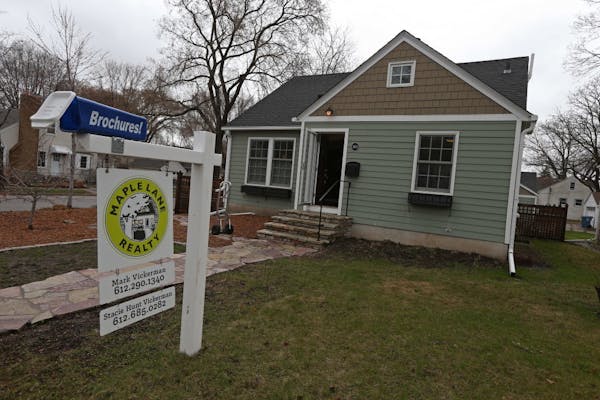The Minnesota House threw its support Monday behind a Republican plan to lower the state's individual income tax rate for the first time since 2000, while rewriting significant portions of the state code to minimize the consequences of the recent federal overhaul on Minnesota filers.
The House voted 90-38 to back the plan, with 13 DFL lawmakers joining every Republican to support it. The plan would lower individual income taxes for 2.1 million Minnesota filers by increasing the amount of tax-free money married filers can earn by $1,000, and lowering the second lowest income tax rate from 7.05 percent to 6.75 percent by tax year 2020.
"Simplicity in the tax code. Historic tax relief. And focusing on the middle class. That's what this bill does," said Rep. Greg Davids, R-Preston, the bill's author and chair of the House Taxes Committee.
A smaller number of Minnesotans, about 148,000 in the latest estimate, would see a tax increase with the plan's elimination of some deductions.
In a lengthy floor debate, some DFL lawmakers argued that the bill's benefits are skewed to the wrong taxpayers.
"They are prioritizing corporations and the wealthy instead of Minnesota families," said House Minority Leader Melissa Hortman, DFL-Brooklyn Park.
Despite easy passage in the House, the bill has a difficult path to becoming law in the three weeks before the Legislature adjourns May 21. Senate Republicans are rolling out their own tax proposal on Tuesday.
DFL Gov. Mark Dayton has signaled resistance to some of the key measures of the House tax proposal, including its long-term impact on the state's finances and the division of spoils between families and corporations, whose rate would go down under the House plan from 9.8 to 9.64 and then to 9.06 in 2020.
Minnesota finds itself in a policy pickle because the state is one of just a few that bases state taxes on an income figure plucked from the federal filing called "federal taxable income," which then becomes the starting point for determining Minnesotans' taxable income.
Every year, the Legislature has to change its tax law to bring the state tax system into alignment with federal law, an annual exercise known around the State Capitol as "conformity."
This year, after the biggest federal tax overhaul in three decades, Minnesotans would face significant consequences if the Legislature does nothing. The state Department of Revenue would have to administer the state's tax system based on the old federal law, leaving a complex maze for both tax collectors and taxpayers filing under two different systems and leading to a tax increase for an estimated 300,000 filers.
If Minnesota adopts the federal rules in full, however, about 870,000 Minnesotans would face a state tax increase averaging $489, according to the state Department of Revenue.
The loss of personal and dependent exemptions in the new federal law would increase federal taxable income for many Minnesotans, and, thus increase their taxes if the state adopts the federal changes, the Department of Revenue estimates show.
Davids' plan combats these potential tax increases by retaining the personal and dependent exemptions in the Minnesota tax code and cutting income tax rates. That's where the estimated 148,000 Minnesotans would see a tax increase under the House GOP plan.
The House tax bill would divorce the state tax system from the federal, thus giving the state more autonomy in the future.
Dayton has proposed his own tax plan to deal with the federal overhaul, also proposing to divorce the state's tax system from the federal. Dayton would raise taxes on businesses to give a small income tax cut for about 2 million Minnesotans and retain many of the deductions eliminated by the federal government.
J. Patrick Coolican • 651-925-5042
